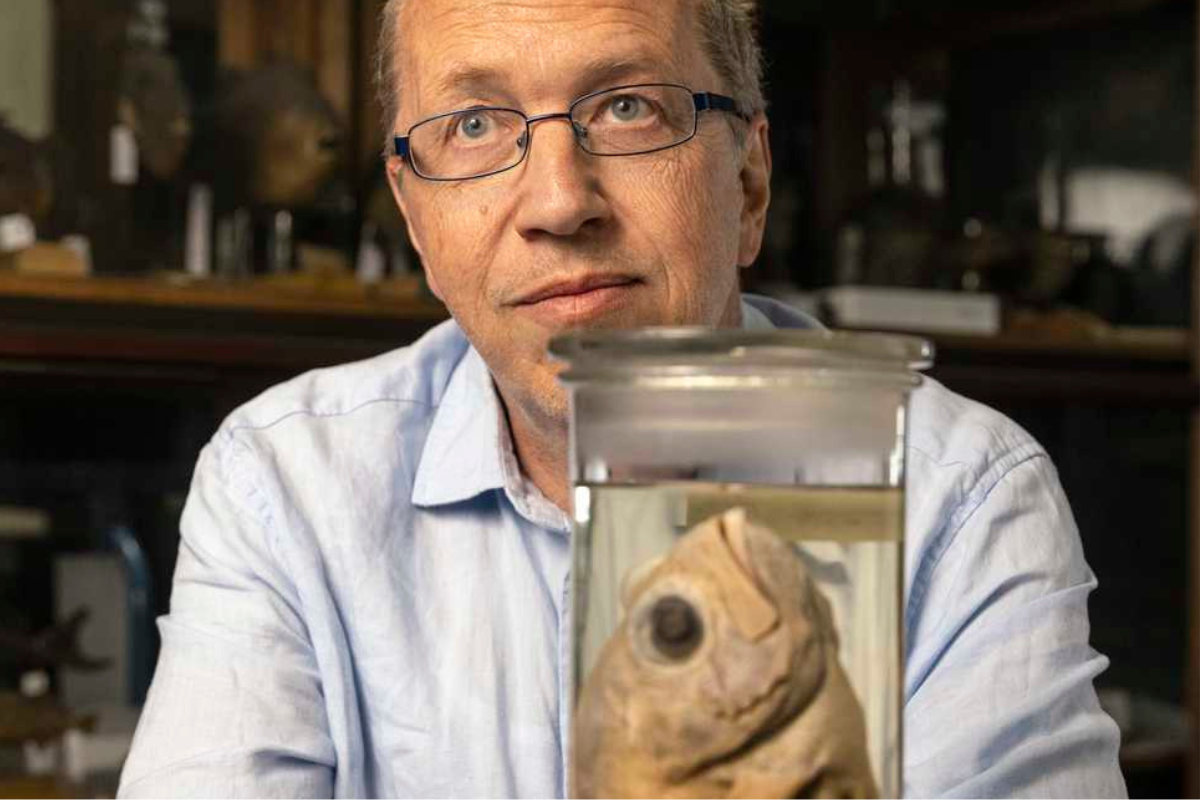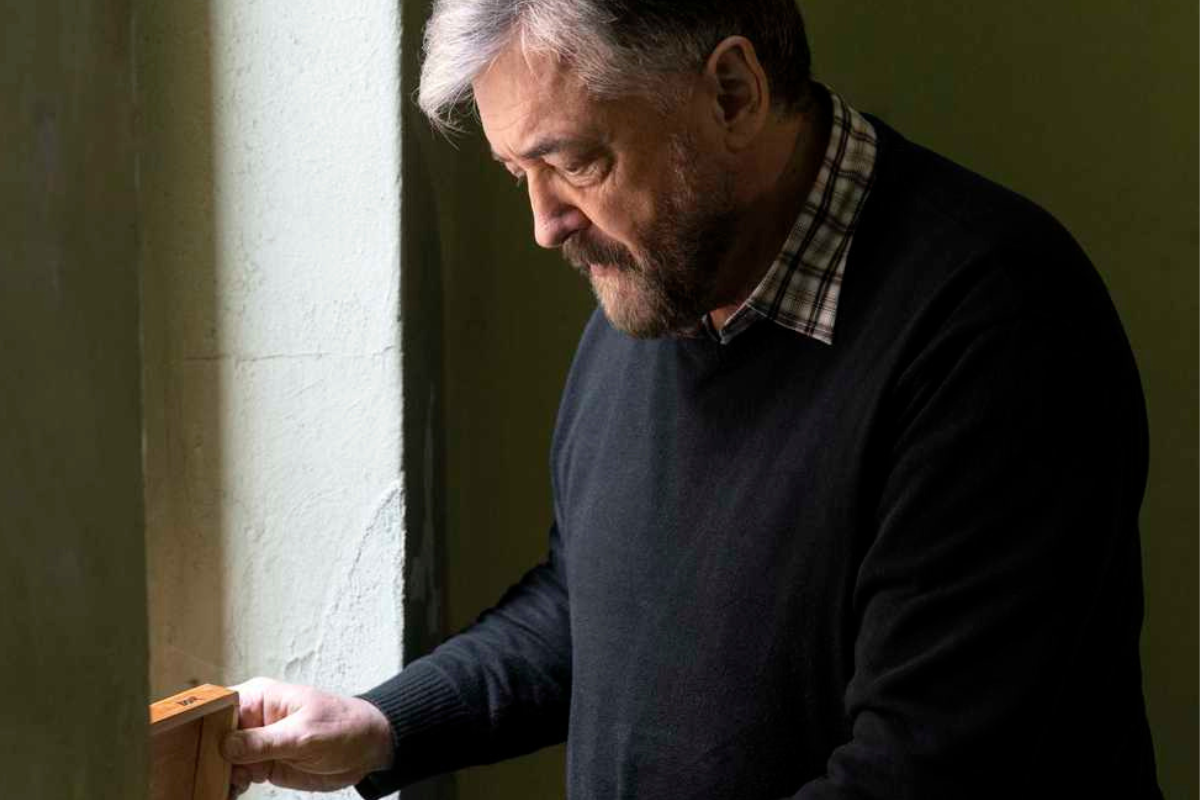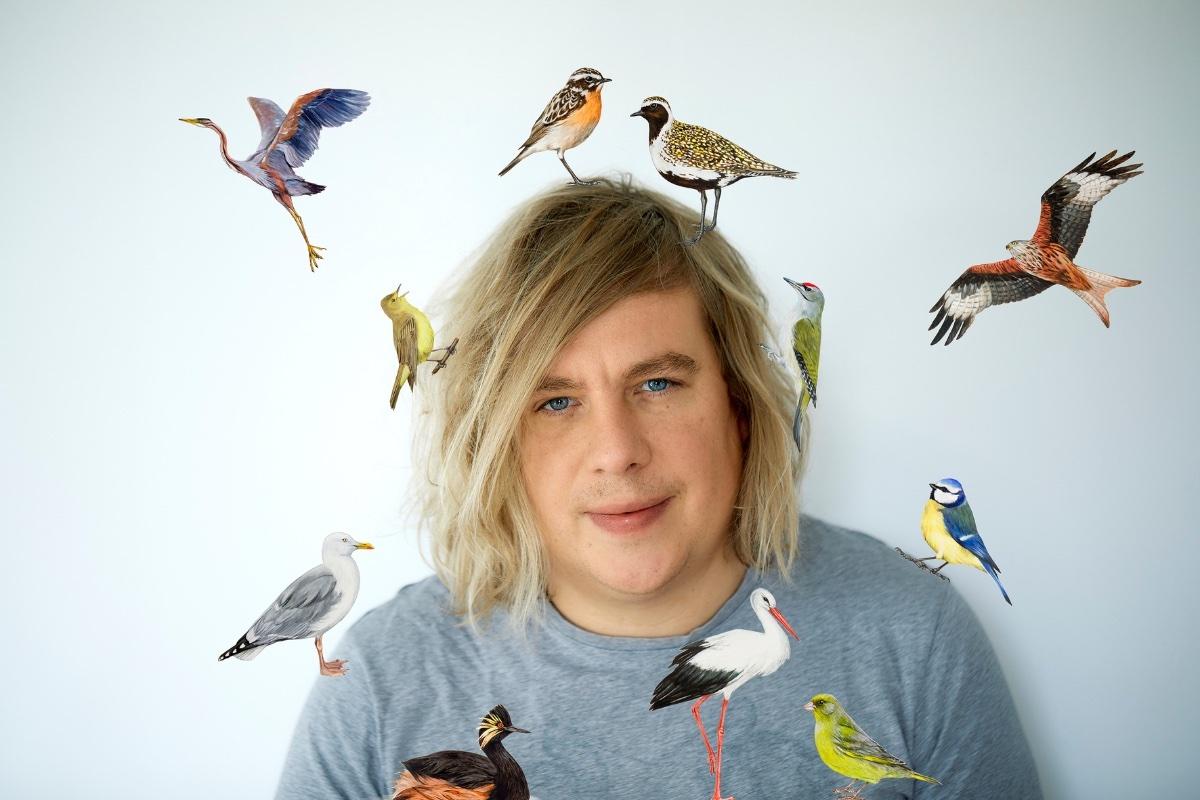The simplest key to happiness: How the Museum für Naturkunde Berlin promotes happiness through art and knowledge, to open our eyes and hearts – and learn to love nature in new ways
This variety of shapes, colours and sounds. For example, the song of a nightingale. Suddenly, on a spring evening, a nightingale is there, chirping a glamorous sound on spring evening in twilight, which can consist of up to 300 stanzas. Or the iridescent blue plumage of a kingfisher swooping over a stream. These are the small wonders of nature for Dominik Eulberg. It’s beauty and refinement which make us feel enraptured - if we pay attention to them. "The joy of a kingfisher or the song of a nightingale can be so true that every cell in you rejoices," says Eulberg. He calls these moments of deep happiness in the face of nature "Microorgasms". Eulberg is an international known techno DJ, music producer and ecologist. At the Museum für Naturkunde Berlin he combines two different worlds together: electronic sounds with natural science, the creative with the classification. He brings an artist's perspective to research, raises questions, provides nourishment for thoughts and develops playful activities for museum visitors.
Nature and Sound
His latest album "Avichrom", which landed at number 34 in the German album charts, is dedicated to the intoxicating variety of colours among the birds - the songs are called Greenfinch, Golden Plover, Red Kite or Black-necked Grebe. Since Eulberg has been a guest scientist at the Museum für Naturkunde Berlin, biodiversity sound shows have been taking place in the Sauriersaal. As celebration for biodiversity as a total work of art with images, sounds and "miracle facts". It means for Eulberg, that "miracle facts" are all the provable fragments of knowledge about nature's fascinating gifts that can inspire us to marvel. . He has programmed algorithms that convert animals sounds into notes and trigger synthesiser effects. The result is an electronically enhanced warble triggered by creature of nature. He has similar plans for bats. "I will translate their echo-location call live into notes in Berlin parks, the animals will produce music as they fly by." He has already played dozens of times at techno festivals, for example at the Brandenburg festival "Wilde Möhre" in Brandenburg, and as an honorary bat ambassador for the NABU for ravers.
Ecological message
Since Eulberg became successful with his music, he has used the stages as a consultant to give ecological messages to the people. If you buy the Avichrom album, you will learn something about the situation of meadow-nesting birds in Germany He also repeatedly makes the dramatic insect die as topic of discussion. He mentions that between 1989 and 2016, populations in German nature reserves declined by more than three quarters. "The damage we are doing to biodiversity will become a threat to humanity faster than global warming."
The silencing of nature can still be stopped
The pale creature lying in a jar of yellowish alcohol in a display case at the Museum für Naturkunde Berlin. It is already irrevocably lost. The last specimens of the Chinese Swordtail Sturgeon were sighted about 15 years ago. They are curved and with wide, distorted mouths. The creatures are about one and a half metres long, with beady eyes and are surrounded by hundreds of other fish of all shapes and sizes in a darkened room that always has a creepy factor for visitors inside the museum. It is the Nass-Sammlung

Jörg Freyhof is an ichthyologist, fishologist and a luminary in the field of freshwater fish. He coordinates the Red List of endangered fish species for Germany and Europe. “The state of fish is worrying, we had to include many more species in the current Red List than in the last one and we have than the last one and we have lost more than we thought, than we thought.” In Germany almost all sturgeon species are now extinct, as is the North Sea snipe, too. A total of ten per cent of all fish species have been proven to have disappeared, but the actual number is probably much higher. Environmental pollution, incorrect fisheries management and the uncontrolled release of invasive species are only three of the many reasons for this. Elsewhere, the situation under water is not much better. Freyhof has calculated for North Africa that the species loss is 15 per cent.
Protecting species instead of mass extinction
“It is a bitter reality that we are at the beginning of the sixth mass extinction, a massively increased extinction rate caused by humans,” says Freyhof. “Yet we only know part of the mind-boggling diversity that surrounds us.” That time is pre”sing to preserve the colorful vibrancy around us and thus protect ourselves is becoming increasingly clear. The latest species conservation report of the UN World Biodiversity Council IPBES warns that up to one million species could become extinct worldwide in the next few decades. And that means dramatic consequences for humanity as well. This year, therefore, a new world nature agreement is finally to be negotiated in Kunming, China, in order to stop the silencing of nature after all. Fortunately, nature is resilient and can recover, but this urgently requires a much higher priority for species and nature conservation,” says Freyhof. “And realistic goals that can also be achieved.”
Passion and expertise to preserve the biodiversity
Like many scientists at the Museum für Naturkunde Berlin, Jörg Freyhof discovered a gene for animals and plants in himself early on and has been roaming around old arms of the Rhine near Ludwigshafen. He crouched in camouflage tents by ponds to listen to toad concerts and tried to photograph the bluethroat. He has also been involved in nature conservation. “I have remained true to this line, science has to be linked to commitment for me in order to make sense, “ says Freyhof. His research flows into management plans for fisheries and is the basis for the design and financing of conservation projects. With his knowledge of fish, he advises politicians and non-governmental organisations and sits on committees for the preparation of the Convention on Biological DiversityAt the Biodiversity Policy Lab, one of the research units for biodiversity policy, thought-provoking impulses are created in parallel for the debates surrounding biodiversity and the relationship between humans and nature. An important basis for biodiversity protection is also provided by taxonomy, i.e. the systematic classification of living classification of living organisms. “And for this classification, we need the type specimens from which certain which certain species were described for the first time first described – these are the real treasures of natural history collections.”
The collection of the Museum für Naturkunde Berlin contains many of these reference species – 5,600 birds and and 1,700 fishes alone, including sensations the round-headed violin ray, first discovered by Marcus first described by Marcus Élieser Bloch more than 200 years ago.
Saving the needled flies from Russian bombs

In an unrenovated part of the museum building is the collection of flies and mosquitoes or so called "diptera". The scientist Valery Korneyev has set up a temporary workplace there, where insects collected over the centuries have been stored among dozens of old cupboards. On his desk by the window, boxes are stacked with carefully needled flies labelled with Chinese ink. Some of the specimens are stored in makeshift taped cardboard boxes, others in wooden cases or cigar boxes. "This was a pallet of tins from the supermarket," says Korneyev. He is a tall man with a deep voice, wearing mountaineering boots and tinted glasses. Korneyev is a dipterologist, a fly and mosquito researcher. He comes from Ukraine, where he heads the Entomological Department and Collection Management at the Schmalhausen Institute of Zoology in Kyiv. This belongs to the National Academy of Sciences of Ukraine. He brought the flies from Kyiv to Berlin to protect them from the bombs. In February, when the Russian invasion of Ukraine began, he was in the process of revising the flies of the family Pyrgotidae and searching the natural history collections for specimens and reviewing the existing taxonomic systematics. which no one had done since the first descriptions Much of the original archives had become confused over the years, some species had been described twice or three times, others were not recognized as separate species. "It gives me great pleasure to bring order to chaos," says Korneyev, who sees his work as a crucial basis for nature conservation and is jointly responsible for the Red List of insects in Ukraine.
“What prevents us humans from destroying ourselves, waging wars and ruining the biosphere with all its biodiversity, it is the thin layer of culture, that can be easily destroyed from those who can’t feel empathy in themselves." Valery Korneyev
